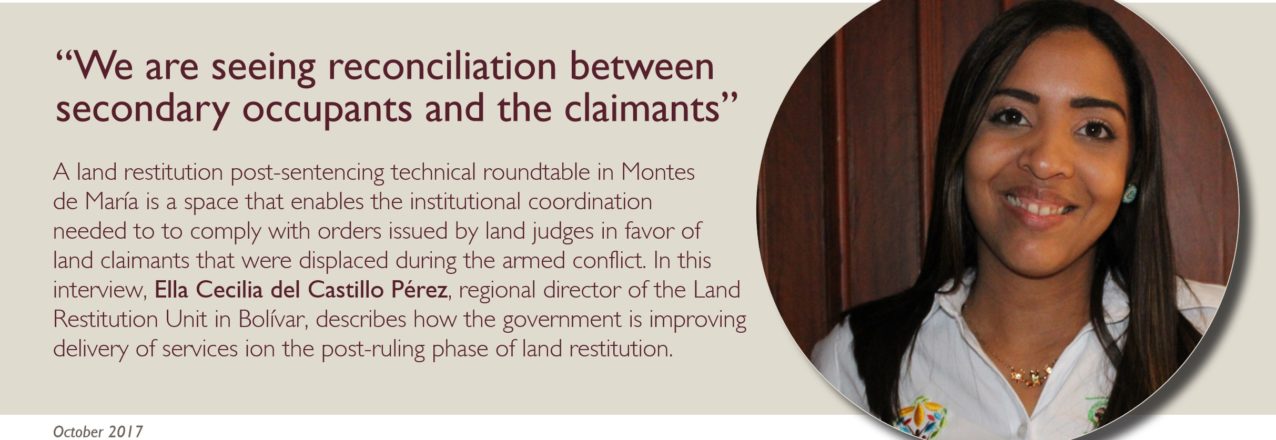The Feed the Future Tanzania Land Tenure Assistance (LTA) activity as an integral part of USAID’s broad initiatives in the Southern
Agricultural Growth Corridor of Tanzania (SAGCOT). The project will be implemented over four years and provide assistance to local level authorities in the delivery of land tenure services under the village land laws and acts of Tanzania. The LTA commenced in December 2015, and as of May 2016 has established operations in Iringa District and completed inception activities.
The LTA has three objectives:
- Assist villages in completing the land use planning process and delivering Certificate Customary Rights of Occupancy (CCROs) through the use of open source mobile technology (Mobile Application for Secure Tenure MAST);
- Build capacities of village and district land governance institutions, and individual villagers, to complete land use planning and the process of issuance of CCROs to village land owners and to effectively manage land resources, respect women’s land rights and build agriculture-related skills in land use optimization and valuation, business, entrepreneurship and negotiation through education and awareness raising activities; and
- Raise awareness of the MAST technology within the GOT, civil society, academia and private sector, with the goal of increasing uptake of the MAST technology on a national level.
The work will be undertaken through four activities:
Activity 1: Assist villages and District administrations in completing the land use planning process and delivering CCROs in select districts and villages
Activity 2: Educate and build capacity of village land governance institutions and individual villagers to complete the land use planning and CCRO process, effectively manage land resources, respect women’s, youth and pastoralist’s land rights and build agriculture-related business skills.
Activity 3: Educate and build capacity of district-level land governance institutions in Mbeya Region to complete the land use planning and CCRO process, effectively manage land resources, respect women’s, youth and pastoralist’s land rights and build agriculture-related business skills.
Activity 4: Build capacity to use the MAST application throughout the SAGCOT and Nationally
USAID POLICY CONTEXT
The USAID/Tanzania’s Country Development Cooperation Strategy, USAID’s Gender Equality and Female Empowerment Policy, and the Youth and Development policy to strengthen youth programming and participation underpin and inform the overall approach and strategy to addressing gender issues under LTA. In 2012, USAID adopted a Youth in Development Policy to strategically support, protect, prepare, and engage young people in achieving development outcomes. The Youth in Development and Gender Equality and Female Empowerment recognize that gender norms determine the way households allocate resources to sons and daughters, through decisions about boys’ or girls’ education, where they work, and how they spend their time.
LTA implementation has the potential to substantively impact the role of women, both in the administration of land and realization of their rights. This will contribute significantly to key USAID impacts, including:
- Reducing gender disparities in access to, control over and benefit from resources, wealth, opportunities and services–economic, social, political, and cultural;
- Reducing gender-based violence (GBV) and mitigating its harmful effects on individuals and communities; and
- Increasing the capability of women and girls to realize their rights, determine their life outcomes, and influence decision-making in households, communities, and societies
- The overarching objective of the LTA program is to nurture and promote an equitable system in land administration. Starting with the Gender and Youth indicators outlined in DAI’s Technical Proposal, LTA will work with the COR to ensure custom indicators and disaggregation of all relevant indicators meets requirements as set out in the policy. Impacts on women and youth will be monitored and reported, allowing progressive learning and adaptation of program interventions to maximize empowerment of women and youth.
In all aspects of program implementation, LTA commits to being proactive in ensuring women, youth, and vulnerable groups are an integral part of the process.
Objectives
For LTA to achieve the goal of equity in the land administration system, it must effectively engage and mobilize all members of the communities (men, women, village elders, youth and vulnerable groups, such as the disabled and landless) in which it will operate. Inclusion must be in realizing and understanding rights and the overall process through which these are delivered and maintained. This includes participating in, and being beneficiaries of public outreach, parcel demarcation and adjudication, title issuance and subsequent registry maintenance.
The LTA contract specifically mentions the need to ensure women’s and youth rights are taken into account in all aspects of implementation. The purpose of LTA is to identify and clarify rights in land, and formalize these. Successful inclusion of women and other potentially marginalized groups hinges on ensuring implementation of equitable procedures for all with full participation and inclusiveness.
This Gender and Vulnerable Groups Plan presents a summary of the practical measures the LTA will adopt achieve these goals – translating evidence into action, to empower, protect, and foster participation for women, youth and vulnerable groups through LTA implementation.
In advance of field operations, it provides LTA’s guiding principles and key definitions to frame the approach, and presents a number of actions and safeguards to be adopted.


